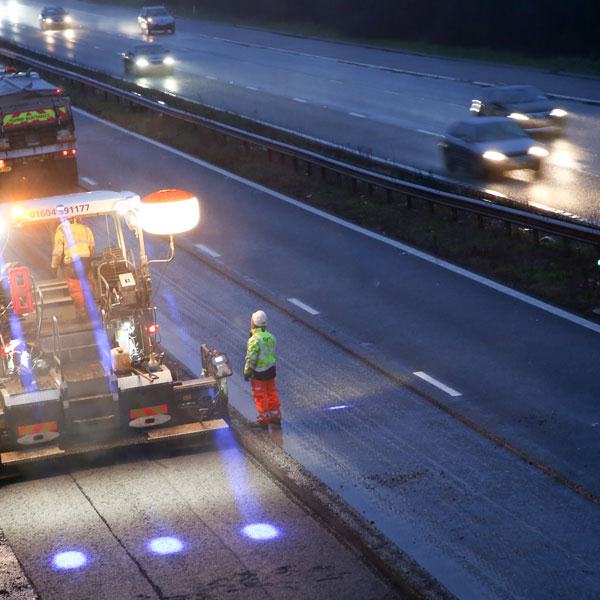Stockport Highway Investment Programme
Stockport

Client
Stockport MBC
Contractor
Tarmac Contracting
Location type
Major roads
Completion
Commenced 2014 and ongoing
The challenge
Tarmac are part of a collaborative project, the Stockport Highway Investment Programme (HIP). The objectives of the programme are to successfully carry out a range of repairs from patching to resurfacing, in targeted areas within the borough. The programme also aims to provide a long term solutions to the various areas of deterioration on the highway network throughout Stockport. The £100M investment work started in 2014 and is due to be delivered over a 9 year programme.
The outcome
By taking a collaborative approach and using innovative and sustainable solutions the programme continues to strive forward.
Stockport MBC and Tarmac have benefited from collaborative working relationships. The same Project and Client Managers have been maintained and relationships have are built with mutual respect and trust.
Tarmac has deployed ULTITHIN materials to avoid unnecessary disposal or recycling costs where tar had been found at specific depths. Other ULTI products have been used including ULTIPAVE, ULTIGRIP and ULTICOLOUR.
Results and benefits
To date Tarmac have laid over 7,000 tonnes of ULTILOW material, a low temperature asphalt that provides significant carbon reduction. The application of the ULTILOW materials require less energy, ULTILOW asphalts can deliver carbon footprint savings of up to 25% compared to hot equivalents.
ULTILOW also reaches the appropriate traffic temperatures quicker, so roads can be opened earlier. This helps to reduce delays and disruption to local residents, as well as to road and pedestrian users.
Additional info
Development and improvements
The HIP investment has also resulted in savings. Claim costs and numbers have reduced for the Authority and repudiation rates are increasing. This is in part due to the development of systems in both organisations, site working arrangements and more importantly an improvement in network condition. This is measured by a reduction in the number of grade 4/5 sites which are routes that are functionally or structurally impaired.
